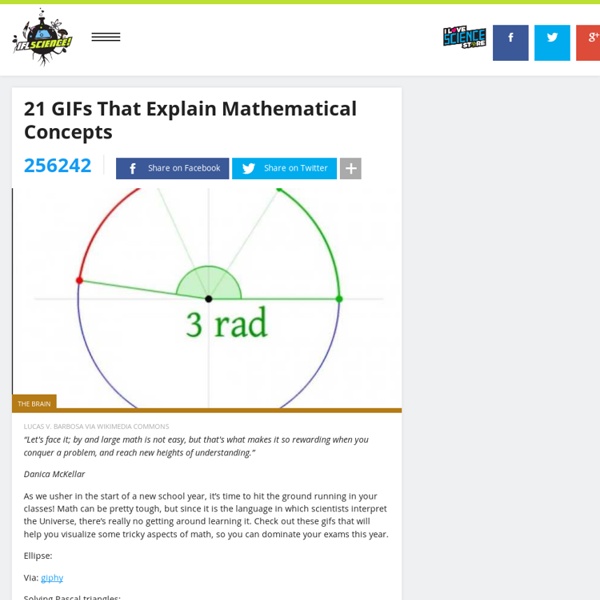How To Use Pokémon Go In Your Math Class - Tips4Teachers
As a culturally relevant and responsive educator, I feel a deep sense of obligation to write this next post: How to use Pokémon Go in your math class. I know, I know. It’s a difficult job, but after waiting a few days and watching my Twitter list of math teachers roll by with no mention of how to leverage this Pokémon craze we seem to be going through, I knew that at some point I would have to take on the gargatuan task of how to incorporate this cultural phenomenon into our lesson plans. All joking aside, I do think that its important that we acknowledge our cultural relevance to our students as much as we can.
Skolår 7 - Matteboken.se
Upload mattecentrum.se Mattecentrum Loading...
Dividing Fractions
Turn the second fraction upside down, then multiply. There are 3 Simple Steps to Divide Fractions: Example:
Will We All Be Eating Insects In 50 Years?
Each year, around 70 million people are added to the world’s population. If growth continues at this rate, by 2050 the population is expected to reach a whopping 9 billion. To feed all of those hungry mouths, we will need to produce almost twice as much food as we currently do. But that is going to be no mean feat—we already use 70% of agricultural land to raise livestock, oceans are overfished, environments are becoming polluted and climate change and disease threaten crop production.
Exploring Geometry by Coding With @gosphero & @tickleapp
In this article I would like to dissect the Math curriculum here in Ontario and focus on the process of mathematics. From the Ontario curriculum document: Problem Solving Problem solving is central to learning mathematics. By learning to solve problems and by learning through problem solving, students are given numerous opportunities to connect mathematical ideas and to develop conceptual understanding. Problem solving forms the basis of effective mathematics programs and should be the mainstay of mathematical instruction.
Divisibility Rules Math Poster for Your Classroom
This new math classroom 12" x 18" PosterEnvy poster demonstrates helpful division math rules that will help your students with some handy division tricks! Designed by teachers for fellow educators - this poster fits the National Educational Curriculum Frameworks and Common Core Standards and is a PosterEnvy exclusive so you're not going to find it anywhere else in the world! All of our posters are printed on high quality, 80lb.
Lego Math Game {Greater Than or Less Than}
We are definitely a Lego loving family. On any given day our dining table is covered from end to end with R’s (4 yrs) latest creations. There are so many ways to play with Lego and we’ve been using it for lots of math and literacy games as well. When I created this Lego math game for R, I knew it would be a hit. R is a visual learner so this Lego game was perfect for his learning style. To set up our Lego math game I printed out the numbers 1 through 20 and cut them into individual pieces.
Arithmetic Problem Solver & Skill Builder
Home Introduction Prologue 1 Elementary Addition Sums less than 10. Sums equal to 10.Sums between 10 and 20.
10 Animals With Incredible Superpowers
“If you could have any superpower, what would it be?” is one of the most common icebreaker questions there is. It makes sense, since our physical limitations are pretty firmly defined and the idea of being extremely exceptional is something that everyone has dreamt about at one point or another. Superpowers aren’t only found between the pages of comic books; there are many animals on Earth who have extreme abilities compared to humans. Check out this video from Hybrid Librarian that explores 10 amazing animals with incredible superhero-like talents:
The Teacher Who Believes Math Equals Love : NPR Ed
What makes a great teacher great? That's the question at the heart of 50 Great Teachers, from the NPR Ed Team. For her trigonometry class, Sarah Hagan (center) uses everything but the kitchen sink: a flower pot, garbage basket, rolls of tape, rubber balls, even loose spaghetti. Elissa Nadworny/NPR hide caption toggle caption Elissa Nadworny/NPR For her trigonometry class, Sarah Hagan (center) uses everything but the kitchen sink: a flower pot, garbage basket, rolls of tape, rubber balls, even loose spaghetti.



